The Old Synagogue is an age-old, eminent and the only well-preserved testimony to Jewish presence in the town. The first mention of Jews was recorded once in tax accounts of 1576, when they paid head tax for ten people. Yet they must have been living here before, as indicates a certain municipal document of 1592, which in mentioning their cemetery calls it an old-time one. This means it must have been very old even back then. Earlier Jewish presence in Pińczów is also spoken of by local tradition, according to which the site for the first synagogue was given to the local community by King Casimir the Great (died 1370) himself, who was known for his kindliness towards Judaism followers. And Esterka, a friend of that same monarch, is said to have provided the newly built shul with a valuable piece of furniture – the Chair of Elijah, essential for the circumcision ceremony. In this way, the history of Pińczów Jews gained appeal, and the synagogue – prestige.
In the old-Polish period, the mighty lords of the town – Oleśnickis, Myszkowskis, Wielopolskis, ensured religious tolerance, security and unhampered business activity to the Judaic population. The business privilege granted to Jews by ordynat (entailer) Zygmunt Myszkowski in 1594 was respected by his successors, who added their own signatures under the original text. In a later period this privilege was extended by lord Stanisław Kazimierz Myszkowski. In consequence of the town owners’ pragmatic policy, the town enjoyed economic boom. Jews had brisk business relations with Kraków and other towns of Małopolska, as well as the remote Gdańsk and Leipzig. They even had business connections with the bankers of the Imperial Vienna.
The ordynats also allowed Jews to fund schools with their own teachers, enlarge kirkuts (cemeteries) and build new temples. Impudents disrupting the service in the synagogue or harming one of the faithful would be met with a high fine. Thus it is no wonder that during the Swedish invasion of Poland (1655-1660) nearly a thousand Jewish families from the Sandomierz voivodeship found refuge in Pińczów, under the care of Władysław Myszkowski, Kraków voivod.
Successes in economy and growing affluence were of great significance, for they resulted in population growth to an extent making Pińczów the most populous town of the voivodeship, with one of the greatest Jewish populations in Poland. Hence came the sayings: “As many Jews as in Pińczów”, “Packed like Pińczów with Jews”. The commune’s position is indicated by the fact that three times it hosted sessions of the Council of Four Lands, as well as having the seat of Kraków-Sandomierz administrative district located here.
Two people need to be recalled here, the figures of two 19th century lords of Pińczów who played a tremendous role in the emancipation of Polish Jews. One of them, Jan Olrych Szaniecki (died 1840), outstanding lawyer, deputy to the Diets of the Congress Poland, submitted a bill to the parliament that suggested among others equality of rights for the Jewish population, which was supposed to win Jews over to the then burning November Uprising against Russia. The other figure was Aleksander Wielopolski (died 1877), civil government head nominated by the tsar; in 1862 he rescinded previous limitations concerning Jews. Abolished were then bans concerning the place of inhabitation, real estate purchase, performing public functions, separate taxes.
Worth recalling here is also the entry in the Jewish Encyclopaedia (Petersburg 1908-1913), where in the very beginning one reads: “Pińczów belongs to places where Jews face no hindrance in life”.
In 1748 there stood three synagogues in the town, including a wooden one. Both stone ones survived until WWII, but were damaged during the war. The younger one at Krakowska Street was pulled down, although it could have been saved. The older one, on the other hand, situated at Klasztorna Street, although devastated and neglected, fortunately survived to see its restoration that brought its former beauty back.
The Old Synagogue is a cuboid. Its walls are supported by stone buttresses, and high walls built up over the ceiling’s level form an austere attic deprived of any decorative elements. The attic shelters a concave wooden roof with copper roofing, and water gathering there is removed outside by metal spouts.
The shul consists of several rooms. There is the main room, called male room, with an adjoining vestibule which had a kahal room sectioned off; over them, in the first floor, with a separate entry, there is the women’s gallery (empora). This synagogue is in Polish synagogue architecture the oldest example of a temple of a so-called lengthwise system, in which all rooms were built at the same time and form a compact building with a common roof. The synagogue was continuously surrounded by annexes which held among others religious school rooms and stairs to the upper floor; until today survived only a newer ground-floor vestibule with the main entrance.
The male room takes over half the space in the building, but at the same time it is considerably lower set in comparison to the vestibules and the ground level, because the synagogue was once situated in a slight drop in ground level. Szymon Zajczyk, a Jewish art historian, was of the opinion that this room, due to similar interior proportions and vaults supports, is a copy of the interior of the gateway to the courtyard of the Wawel Royal Castle. Between two tall windows there is the Ark with a triangular pediment on which lions keep up the Crown of Torah. The whole is maintained “in the most beautiful Renaissance style”. Remarkable are also the very old and valuable paintings from early XVII c., considered the oldest ones among those preserved in Poland. Rich equipment of the room was lost during the Nazi occupation period (the synagogue was used as a garage and granary). Since 2005, the room is decorated by two stained-glass windows by Jacek Nowak, brought from Heidelberg and presenting hundreds of faces.
The vestibule was once the synagogue’s main transport node, with entrances to the other rooms and the exit. Its ceiling and walls are covered by beautiful polichromy with plant tendrils, flower vases, bowls of fruit, birds, animals and fantastic creatures. There are also painted prayer texts as well as foundation inscriptions with the dates of 1695-96 and 1741-42. The room served religious brotherhoods for common prayers, the community council for sessions and taking oaths in matters of lesser importance. It was heated by a fireplace giving warmth to supplicants, many of whom came oftentimes from far. They are immortalised by numerous graffiti discovered by conservators, engraved and carved Hebraic inscriptions placed there from at least as early as half of the XVII c.
From here, a Renaissance portal leads to a small kahal room, where court sittings took place. This is proved by inscriptions over the entrance, encouraging honesty and impartiality in judgement. In the vestibule’s western wall a stone portal can be seen, now walled up, once leading to a treasury or a small prison. And another, round-arch portal on the southern side, very impressive and decorative, is the entrance to the main room. Upon entering it, a devout Jew saw immediately its two most important elements – the altar (Aron hakodesh) and the bimah. The shul’s first floor contained the women’s gallery, whose interior was illuminated by light from four windows, whereas the other three served the Jewish women to see into the main room. The walls are still decorated by preserved fragments of painted inscription and ornaments going around the room, as well as painted numbers, which marked reserved, payable seats. Next to the entrance in the wall there is a restored, stone money-box from about 1625-1636.
The synagogue is surrounded by a wall the whole surface of which is lined with fragments of headstones of historical value from the town’s destroyed Jewish cemeteries. It was meant to be a monument to commemorate the once presence in Pińczów of the town’s former, tragically gone inhabitants.
The Old Synagogue, neglected in the interwar time, devastated during German occupation, deteriorating after the war due to wrong usage, in the 1980s got under the care of the Regional Museum in Pińczów. For its current condition, a result mainly of activities undertaken between 1998-2005, we need to thank:
the Foundation for Polish-German Cooperation in Warsaw, the World Monuments Fund in New York – from the Jewish Heritage Program and Ronald Lauder Foundation, The Headley Trust in London, Leon Radinski from Houston – a descendant of a Pińczów family of Radzyńskis, the Everlasting Memory Foundation in Warsaw, local governments of the Kielce (Świętokrzyskie) region, the Pińczów Town and Commune and Pińczów Building Stone Works.
The synagogue is visited by about seven thousand people yearly, both from Poland and from abroad: there come Pińczów Jews and their descendants looking for traces of the past, there come individual tourists, and there is also the most numerous of all groups – young people from Israel, the USA, Scotland and other countries. After many years, there have come good times for the synagogue and it’s again dawning in Pińczów for it.
Author: Andrzej Dziubiński
Translation: Agnieszka Maria Gernand
| Day of the week | Opening hours | ||
|---|---|---|---|
| Monday | x | ||
| Tuesday | x | ||
| Wednesday | x | ||
| Thursday | x | ||
| Friday | x | ||
| Saturday | x | ||
| Sunday | x | ||
| Holidays | Opening hours |
|---|---|
| 2025.04.20 (Sunday) | x |
| 2025.04.21 (Monday) | x |
| 2025.05.01 (Thursday) | x |
| 2025.05.03 (Saturday) | x |
| 2025.06.19 (Thursday) | x |
| 2025.08.15 (Friday) | x |
| 2025.11.01 (Saturday) | x |
| 2025.11.11 (Tuesday) | x |
| 2025.12.25 (Thursday) | x |
| 2025.12.26 (Friday) | x |
| Tickets | ||
|---|---|---|
| normal | 10.00 PLN | |
| reduced | 8.00 PLN | |
| Guide | |
|---|---|
| in Polish for a fee | 30.00 PLN |
| when? | name | where? | about what? | for free | for children | |
|---|---|---|---|---|---|---|
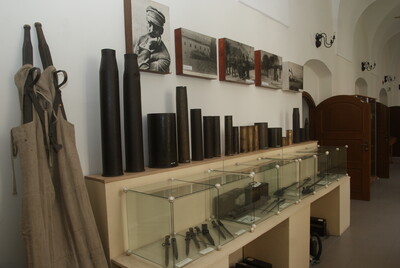 | I i II Wojna Światowa Permanent exhibition | Muzeum Regionalne w Pińczowie ul. Piłsudskiego 2a 28-400 Pińczów Świętokrzyskie | war - other conflicts | yes | ||
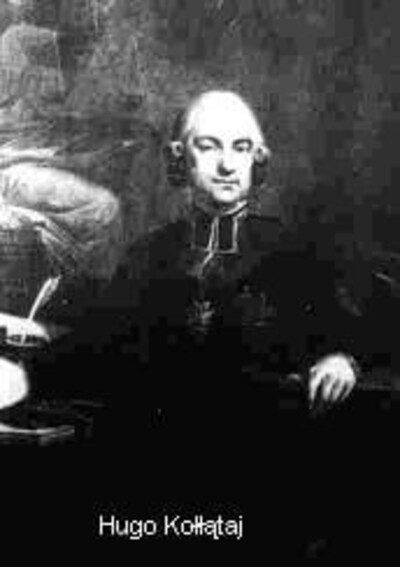 | Sławne i znane postacie w dziejach Pińczowa Permanent exhibition | Muzeum Regionalne w Pińczowie ul. Piłsudskiego 2a 28-400 Pińczów Świętokrzyskie | artists, leaders | |||
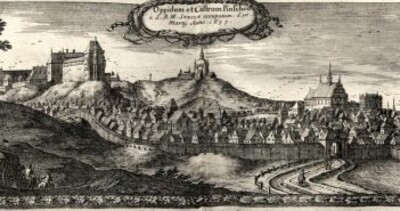 | Pińczów - historia miasta Permanent exhibition | Muzeum Regionalne w Pińczowie ul. Piłsudskiego 2a 28-400 Pińczów Świętokrzyskie | city | yes | ||
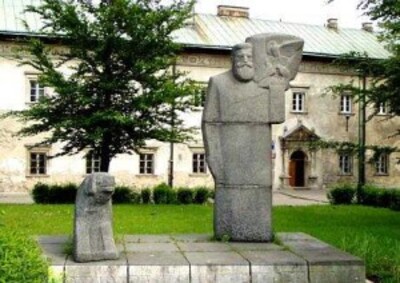 | Adolf Dygasiński -życie i twórczość Permanent exhibition | Muzeum Regionalne w Pińczowie ul. Piłsudskiego 2a 28-400 Pińczów Świętokrzyskie | artists | yes | ||
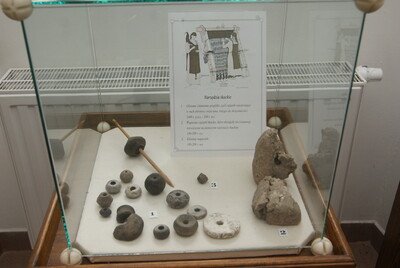 | Pradzieje Ponidzia Permanent exhibition | Muzeum Regionalne w Pińczowie ul. Piłsudskiego 2a 28-400 Pińczów Świętokrzyskie | archeology | yes |